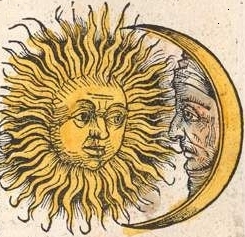Day
Day is a unit of time traditionally reckoned as 24 hours and representing the period of time during which the Earth completes one rotation with respect to the Sun. The concept of a day is significant in many cultural, social, and religious contexts, and is fundamental to the calendars used by societies around the world.
Definition[edit | edit source]
A day can be defined in two main ways: the solar day and the sidereal day. The solar day is the time it takes for the Sun to return to the same position in the sky, typically measured from noon to noon. This varies slightly throughout the year due to the elliptical shape of Earth's orbit and its axial tilt, leading to the concept of the mean solar day, which averages these variations to a fixed 24 hours. The sidereal day, on the other hand, is the time it takes for the Earth to complete one rotation relative to the stars rather than the Sun, and is approximately 4 minutes shorter than the solar day.
History[edit | edit source]
The division of the day into 24 hours is believed to have originated with the ancient Egyptians, who divided daytime and nighttime into 12 hours each, based on the observations of star movements. This system was later adopted and refined by the Greeks and Romans, who introduced the use of mechanical timekeeping devices such as sundials and water clocks.
Cultural Significance[edit | edit source]
Throughout history, the concept of the day has held significant cultural, social, and religious importance. Many ancient societies, including the Babylonians, Mayans, and Aztecs, developed sophisticated calendars to track the passage of days, months, and years, often aligning them with agricultural cycles and religious festivals. In many religions, certain days are set aside for worship and rest, such as the Sabbath in Judaism and Christianity, and Friday prayers in Islam.
Scientific Relevance[edit | edit source]
In the field of astronomy, the day is a fundamental unit of time, used to compile astronomical data and make predictions about celestial events. In biology, the day-night cycle, or diurnal cycle, is crucial for the study of circadian rhythms, which affect the physiological processes of most organisms, including humans.
Modern Usage[edit | edit source]
In contemporary society, the concept of the day continues to play a vital role in organizing daily life, work, and leisure. The standardization of time into a 24-hour day has facilitated global communication and coordination, especially with the advent of time zones, which divide the world into regions that observe the same standard time.
Search WikiMD
Ad.Tired of being Overweight? Try W8MD's physician weight loss program.
Semaglutide (Ozempic / Wegovy and Tirzepatide (Mounjaro / Zepbound) available.
Advertise on WikiMD
|
WikiMD's Wellness Encyclopedia |
| Let Food Be Thy Medicine Medicine Thy Food - Hippocrates |
Translate this page: - East Asian
中文,
日本,
한국어,
South Asian
हिन्दी,
தமிழ்,
తెలుగు,
Urdu,
ಕನ್ನಡ,
Southeast Asian
Indonesian,
Vietnamese,
Thai,
မြန်မာဘာသာ,
বাংলা
European
español,
Deutsch,
français,
Greek,
português do Brasil,
polski,
română,
русский,
Nederlands,
norsk,
svenska,
suomi,
Italian
Middle Eastern & African
عربى,
Turkish,
Persian,
Hebrew,
Afrikaans,
isiZulu,
Kiswahili,
Other
Bulgarian,
Hungarian,
Czech,
Swedish,
മലയാളം,
मराठी,
ਪੰਜਾਬੀ,
ગુજરાતી,
Portuguese,
Ukrainian
Medical Disclaimer: WikiMD is not a substitute for professional medical advice. The information on WikiMD is provided as an information resource only, may be incorrect, outdated or misleading, and is not to be used or relied on for any diagnostic or treatment purposes. Please consult your health care provider before making any healthcare decisions or for guidance about a specific medical condition. WikiMD expressly disclaims responsibility, and shall have no liability, for any damages, loss, injury, or liability whatsoever suffered as a result of your reliance on the information contained in this site. By visiting this site you agree to the foregoing terms and conditions, which may from time to time be changed or supplemented by WikiMD. If you do not agree to the foregoing terms and conditions, you should not enter or use this site. See full disclaimer.
Credits:Most images are courtesy of Wikimedia commons, and templates, categories Wikipedia, licensed under CC BY SA or similar.
Contributors: Prab R. Tumpati, MD





